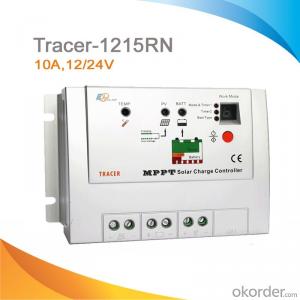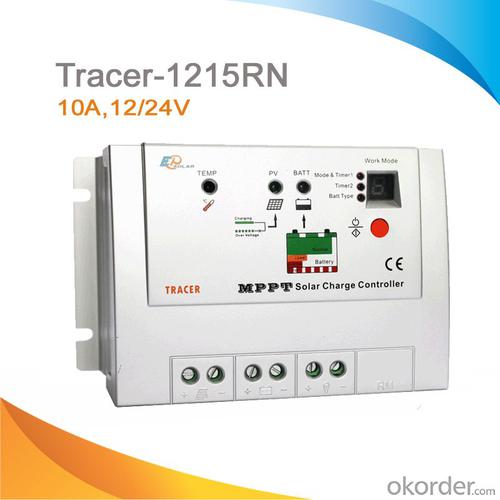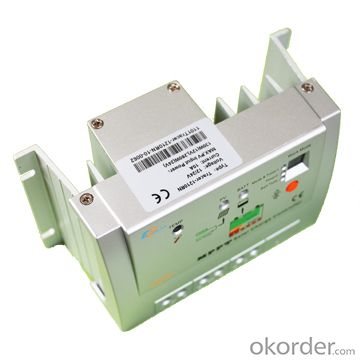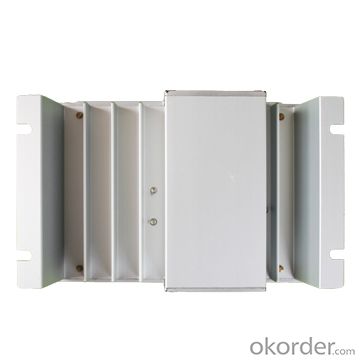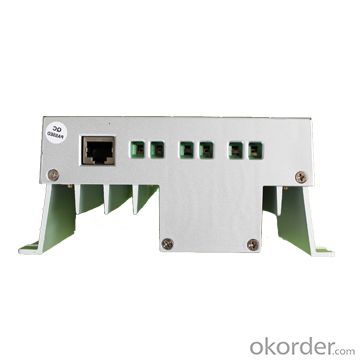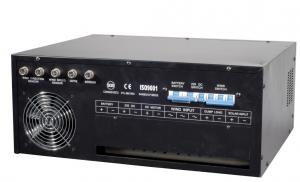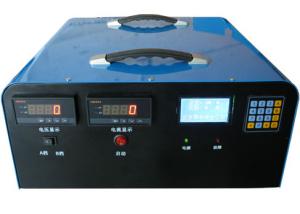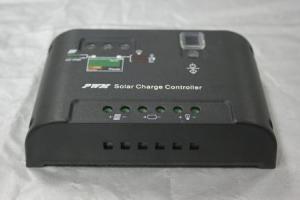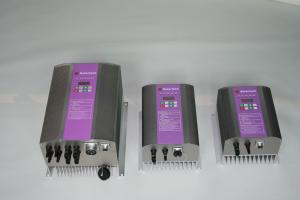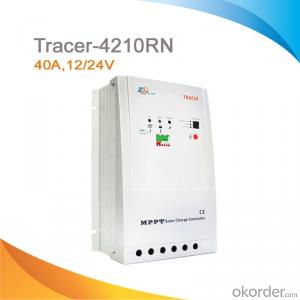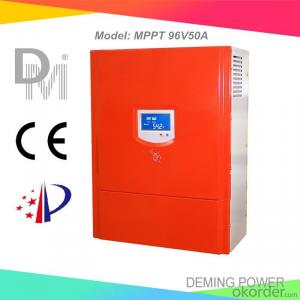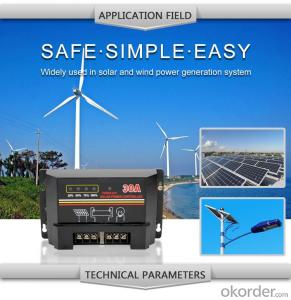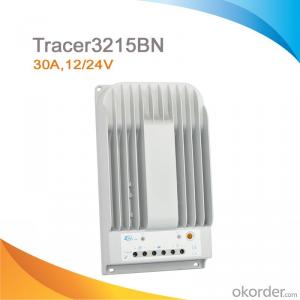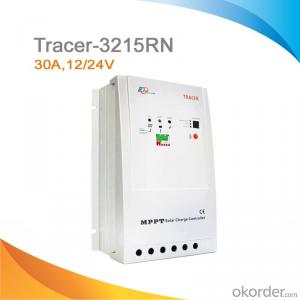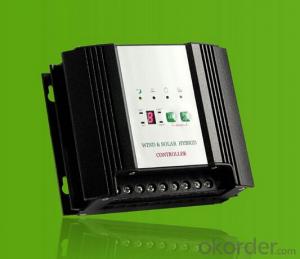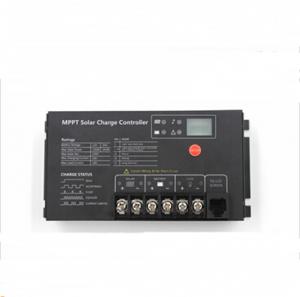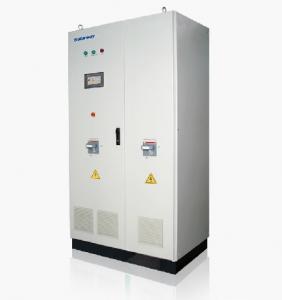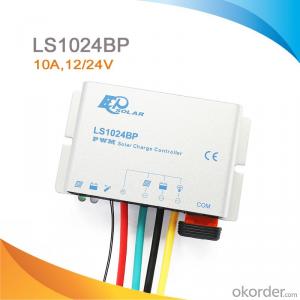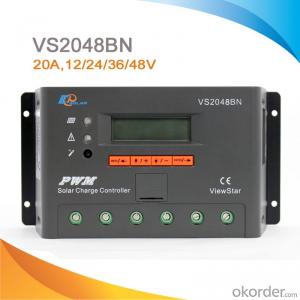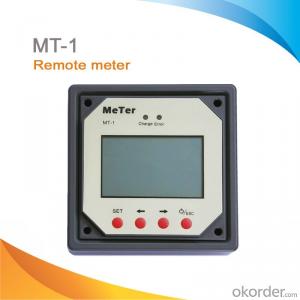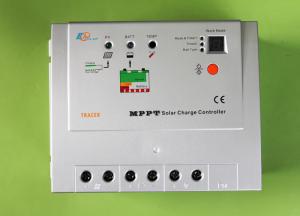Go Power Solar Charge Controllers MPPT Solar Charge Controller 10A 12/24V Tracer-1215RN
OKorder Service Pledge
OKorder Financial Service
You Might Also Like
All of our grid-tie inverters are UL listed and code-compliant. We do not stock refurbished grid-tie inverters.
Because grid-tie inverters have stricter requirements than off grid inverters, refurbished grid-tie inverters may not be code-compliant.
Check with your local electrician or building department before investing in a refurbished grid-tie inverter.
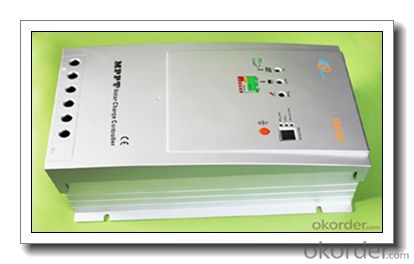
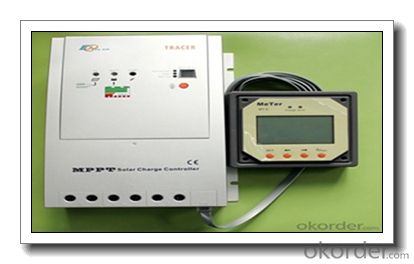
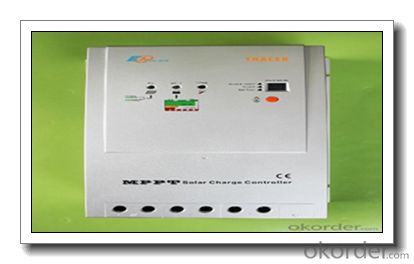
Specifications
MPPT controller
10A,12V/24V
Max PV input power 130W in 12V system, 260W in 24V system
ON/OFF, Dusk to dawn, 1-15h timer
Features:
· MPPT technology
· Peak conversion efficiency of 97 %
· High Tracking efficiency of 99%
· Several seconds tracking speed
· Very fast Sweeping of the entire I-V curve
· 4- Stage charge with PWM output
· Excellent thermal design and nature air cooling
· Full power output in ambient temperatures up to 45°C
· Temperature compensation function
· Sealed, Gel, Flooded battery type optional
· Diversified load control: Manual, Dusk to Dawn, dual timer, TEST
· RJ45 interface with optional remote meter
· Standard 2 years warranty
· CE certificate
Electronic Protections:
·PV short circuit protection
·PV reverse polarity protection
·PV overvoltage alarm protection
·PV over current protection
·Battery overcharge protection
·Battery over discharge protection
·Battery reverse polarity protection
·Load short circuit protection
·Load overload protection
Specification:
Model | Tracer-1210RN | Tracer-1215RN |
Rated system voltage | 12/24V auto work | |
Rated battery current | 10A | |
Rated load current | 10A | |
Max.battery voltage | 32V | |
Max.PV open circuit voltage | 100VDC | 150VDC |
Max.PV input power | 12V 130W; 24V 260W | |
Self-consumption | <10mA(24V) | |
Charge Circuit Voltage Drop | ≤0.26V | |
Discharge Circuit Voltage Drop | ≤0.15V | |
Communication | TTL232 / 8 pin RJ45 | |
Temp.compensation | -5mV/℃/2V | |
Working temperature | -35℃~+55℃ | |
Storage temperature range | -35℃~+80℃ | |
Humidity | 10%-90% NC | |
Enclosure | IP30 | |
Altitude | ≤3000m | |
Dimension | 156mm x 97mm x 68mm | |
Mounting holes | 147mm x 60mm | |
Mounting hole size | Φ5 | |
Terminal | 4mm2 | |
Weight | 0.55kg | |
- Q: What is the communication protocol supported by a solar controller?
- The communication protocol supported by a solar controller is typically Modbus, which allows for data exchange and control between the solar controller and other devices in the solar power system.
- Q: How do I troubleshoot common issues with a solar controller?
- To troubleshoot common issues with a solar controller, you can follow these steps: 1. Check the connections: Ensure all cables and connectors are securely plugged in and free from any damage or corrosion. 2. Examine the solar panels: Inspect the panels for any physical damage or debris that may be obstructing sunlight. Clean them if necessary. 3. Verify battery connections: Ensure the battery terminals are clean, tight, and properly connected. Loose or corroded connections can affect the controller's performance. 4. Check battery voltage: Measure the voltage of the battery using a multimeter. If it's significantly lower than expected, the battery might be faulty or needs charging. 5. Inspect the controller display: Look for error codes or warning messages on the controller's display. Refer to the manufacturer's manual to understand the meaning behind these indications. 6. Reset the controller: Some issues can be resolved by resetting the controller. Disconnect the solar panels and battery, wait for a few minutes, and then reconnect them. 7. Monitor the charge controller: Observe the controller's behavior during different times of the day. If it's not charging the battery or regulating the voltage properly, it might be defective and need replacement. 8. Consult the manufacturer: If the above steps don't resolve the issue, contact the manufacturer or consult their customer support. They can provide specific troubleshooting advice or recommend professional assistance if needed.
- Q: What is the temperature compensation range of a solar controller?
- The temperature compensation range of a solar controller typically varies between -10°C to +40°C.
- Q: Can a solar controller be connected to a computer or smartphone for monitoring?
- It is possible to connect a solar controller to a computer or smartphone for monitoring purposes. Many modern solar controllers come with built-in communication ports like USB or Bluetooth, which allow them to be easily connected to a computer or smartphone. By using the appropriate software or mobile applications, users can conveniently monitor and control their solar systems remotely. This connectivity feature makes it possible to monitor solar panel performance, battery status, charging/discharging rates, and other important data in real-time. Moreover, advanced solar controllers even support internet connectivity, enabling users to monitor their systems from anywhere in the world through a web-based interface or dedicated mobile apps. In general, connecting a solar controller to a computer or smartphone significantly improves the convenience and accessibility of solar system monitoring.
- Q: How does a solar controller handle variations in solar panel orientation?
- A solar controller handles variations in solar panel orientation by continuously tracking the position of the sun and adjusting the output voltage and current accordingly. This ensures that the maximum power is extracted from the solar panels regardless of their orientation, maximizing energy production.
- Q: How does a solar controller monitor the battery voltage?
- A solar controller monitors the battery voltage by continuously measuring the voltage level of the battery. It uses built-in sensors and circuitry to accurately measure the voltage and then adjusts the charging and discharging processes accordingly to maintain the battery within safe voltage limits.
- Q: Can a solar controller be used with solar panel ground screws?
- Yes, a solar controller can be used with solar panel ground screws. A solar controller is responsible for regulating the amount of electricity flowing from the solar panels to the batteries. The use of ground screws to secure the solar panels does not affect the compatibility or functionality of the solar controller.
- Q: I installed the force Norit, solar hot water controller on a regular, set, Sheung Shui, three keys, how to set the automatic Sheung Shui!
- Click the timer key, there are addition and subtraction keys can be set, the specific I did not use Norit big, do not know, you still consult their customer service department, the instructions should also have.
- Q: What is the maximum power rating that a solar controller can handle?
- The maximum power rating that a solar controller can handle varies depending on its specific model and design. However, in general, solar controllers are capable of handling power ratings ranging from a few hundred watts to several kilowatts.
- Q: What is the purpose of the battery over-discharge protection feature on a solar controller?
- The purpose of the battery over-discharge protection feature on a solar controller is to prevent the battery from being discharged beyond a safe level. This feature helps to prolong the battery's lifespan and ensures that it remains in a healthy condition for optimal performance.
Send your message to us
Go Power Solar Charge Controllers MPPT Solar Charge Controller 10A 12/24V Tracer-1215RN
OKorder Service Pledge
OKorder Financial Service
Similar products
Hot products
Hot Searches
Related keywords
